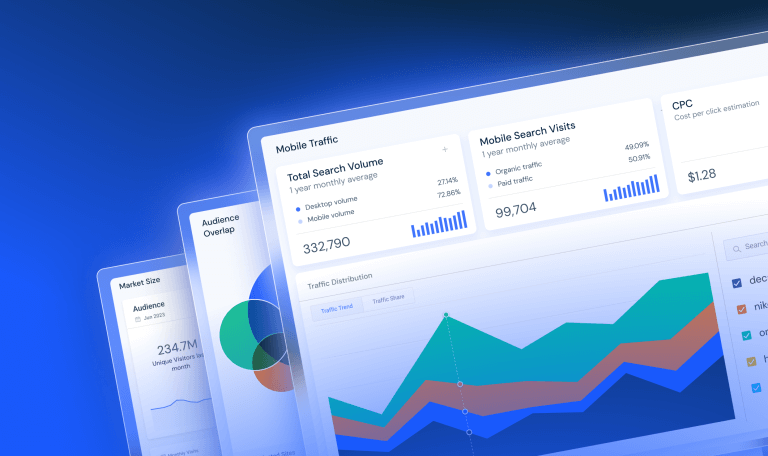Similarweb – The Wikipedia of Web Insights

It’s hackneyed to say we live in an information age, but it’s true. Have you ever heard of Nanchang. Well, it’s a city in China, and it’s the size of Chicago. You’ve never heard of it and you’re going to search it on Wikipedia right now. I dare you not to.
Similarweb scratches that same itch but for web traffic. Hear about a new site, company, or product? Search any site on Similarweb, and you’re guaranteed to find something interesting. Take Cyanogenmod, the custom Android distribution that just formed a new company and partnered with the Chinese manufacturer Oppo to release a new phone. I read a review of the phone on The Verge and wanted to see how Cyanogenmod’s website was doing.
They received about 3.1 million desktop visits in December. Not bad for a custom phone ROM that requires you to crack open your computer’s command line to install.
You can also see that Cyanogenmod had a huge traffic spike on November 13th, receiving almost 350,000 visits. Not bad for a site that received 60,000 visits two days earlier.
Turns out, on November 12th Cyanogenmod released an easy installer app to the Android Play Store–no more need to venture into the unforgiving wilderness of the command line–and received a ton of tech media coverage.
As you would expect, November 12th also saw a corresponding decrease in bounce rate, which fell to 6%. People want to download the app, and they go to the Cyanogenmod website and start poking around. The users who visited Cyanogenmod.com on the app’s release date were interested in using the app and learning more about Cyanogenmod and their engagement patterns reflected this.
However, the bounce rate made a quick recovery the next day, ending up higher than it was two days before. I assume that the visitors who arrived at Cyanogenmod.com on the 13th were coming from news sites. They clicked on a link, glanced at the homepage, and then left. Contrast this with the visitors who came to Cyanogenmod the day the app was released but before widespread news coverage.
There was one last traffic spike in November, which occurred on the 28th. Turns out, the Cyanogenmod installer app was removed from the Google Play Store for violating its terms of service agreement. This yet again generated widespread coverage in the tech media.
Interestingly, on the 28th, the site’s bounce rate reached 51%, much higher than the 31% average for the entire month and 32% bounce rate from the coverage of the installer app on the 13th. My guess is that the bounce rate generated by the November 13th media coverage was tempered by users who wanted to install Cyanogenmod and therefore had to make multiple page-views on the site. On November 28th, you could no longer install the app. There were fewer visits by users who had to do research in order to use the installer and more users who arrived from news stories and never got farther than the home page.
We were able to make all this insight about Cyanogenmod.com just by glancing at the site’s traffic overview in Similarweb Platform. Similarweb Platform has ten other sections. Time to get cracking.
Wondering what Similarweb can do for you?
Here are two ways you can get started with Similarweb today!




